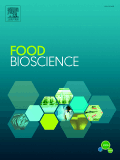
Food Bioscience
Scope & Guideline
Shaping the Future of Food Science with Cutting-Edge Research
Introduction
Aims and Scopes
- Food Quality and Safety:
Research on methods to improve and ensure the safety and quality of food products, including the study of microbial contamination, spoilage, and preservation technologies. - Functional Foods and Nutraceuticals:
Exploration of bioactive compounds in food and their health benefits, focusing on the development of functional foods that promote health and prevent disease. - Biotechnology Applications in Food Science:
Utilization of biotechnological approaches, such as fermentation, enzyme technology, and genetic modification, to enhance food properties and develop new food products. - Food Processing Innovations:
Investigation of new processing techniques, including non-thermal treatments, for improving food quality, extending shelf life, and maintaining nutritional value. - Sustainable Food Systems:
Research on the valorization of food waste and by-products, sustainable practices in food production, and the impact of food choices on health and the environment. - Sensory and Flavor Science:
Studies focusing on the sensory attributes of food, including aroma and taste, and the microbiological and biochemical factors influencing flavor development.
Trending and Emerging
- Functional and Bioactive Ingredients:
There is a growing trend towards identifying and characterizing functional ingredients in food, particularly those derived from natural sources, which have specific health benefits and contribute to functional food development. - Microbiome and Gut Health:
Research linking food consumption, gut microbiota composition, and overall health outcomes is gaining traction, with a focus on how dietary components influence the gut microbiome and related metabolic processes. - Smart Food Packaging Technologies:
The development of intelligent and active packaging solutions that enhance food shelf-life, safety, and consumer engagement is increasingly popular, driven by demand for convenience and sustainability. - Sustainable Food Production Practices:
Research focusing on sustainable practices, including the valorization of food waste and by-products, is on the rise, driven by global initiatives to reduce food waste and improve food security. - Nanotechnology in Food Science:
The application of nanotechnology in food science, particularly for enhancing bioavailability and stability of bioactive compounds, is emerging as a significant research area.
Declining or Waning
- Traditional Fermentation Techniques:
Research on conventional fermentation methods seems to be declining as more innovative and efficient biotechnological approaches gain popularity, leading to a focus on modern fermentation technologies. - Basic Nutritional Studies:
Studies that primarily focus on the basic nutritional content of foods without exploring functional or health-related outcomes are becoming less prominent, replaced by research that connects food composition to specific health benefits. - Non-Functional Packaging Research:
Research that does not incorporate innovative or active packaging technologies is decreasing, as the emphasis shifts toward developing smart and functional packaging solutions that enhance food preservation. - General Food Microbiology:
While microbiological studies remain important, there is a noticeable decline in research that does not integrate advanced molecular techniques or does not connect findings to food safety and quality.
Similar Journals

eFood
Shaping the dialogue in food science and technology.eFood is a pioneering journal in the field of food science, published by the esteemed WILEY. With its impactful emergence, the journal has rapidly established itself within the academic community, evidenced by its impressive Q1 category ranking in Food Science as of 2023, and a commendable position at Rank #95 out of 389 in the Scopus database. Covering a wide spectrum of topics related to food innovation, technology, safety, and nutrition, eFood serves as an indispensable platform for researchers, industry professionals, and students who are at the forefront of advancing our understanding of food systems. The journal notably operates with an open-access model, promoting wide dissemination of knowledge while enhancing the visibility of high-quality research. As we look forward to converging years from 2020 to 2024, eFood is poised to foster rigorous scientific discourse and contribute significantly to the future of food science research.
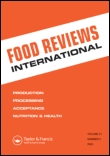
FOOD REVIEWS INTERNATIONAL
Transforming Research into Practical Solutions for the Food IndustryFOOD REVIEWS INTERNATIONAL, published by Taylor & Francis Inc, serves as a pivotal resource within the fields of Food Science and Chemical Engineering. Established in 1985, this esteemed journal offers a comprehensive platform for the dissemination of critical reviews that enhance understanding and innovation in the food industry. With an impressive impact factor reflecting its Q1 quartiles in both Food Science and Chemical Engineering categories, it ranks among the top journals in Scopus, securing the 24th spot in Agricultural and Biological Sciences. Scholars, researchers, and professionals are encouraged to explore its rich content, which spans meticulously reviewed articles that bridge academic research and practical applications, while contributing to advancements in food safety, processing, and sustainability. Although not an Open Access journal, access to its extensive repository is vital for anyone aiming to stay at the forefront of food science advancements.

Foods and Raw Materials
Innovating research at the intersection of food and veterinary science.Foods and Raw Materials is a premier open access journal published by Kemerovo State University in the Russian Federation, dedicated to advancing knowledge in the field of Food Science. Since its foundation in 2013, the journal has established itself as a significant platform for researchers and professionals, featuring groundbreaking studies and innovative findings in both food science and veterinary disciplines. With an impressive impact factor reflected in its 2023 Scopus rankings—where it holds a Q3 categorization and is positioned in the 83rd percentile in Veterinary General, and the 75th percentile in Agricultural and Biological Sciences—the journal serves as an essential resource for academics and practitioners alike. As it continues to evolve and converge through 2024, Foods and Raw Materials aims to foster interdisciplinary collaboration and provide a comprehensive forum for the dissemination of significant research that shapes the future of food safety, sustainability, and technology.

Food Production Processing and Nutrition
Navigating the future of food processing and nutrition.Food Production Processing and Nutrition, published by SpringerNature, stands at the forefront of advancing knowledge in the vibrant fields of food science, nutrition, and public health. This esteemed Open Access journal, operational since 2019, plays a pivotal role in disseminating breakthrough research that intersects food production processes with nutritional insights, making it an invaluable resource for researchers, professionals, and students alike. With a commendable 2023 impact factor reflecting its robust scholarly contributions — Q1 in Food Science and Q2 in both Nutrition and Dietetics and Public Health, Environmental and Occupational Health — the journal not only emphasizes the importance of innovative food processing methods but also addresses pressing nutritional challenges faced globally. Located in the United Kingdom, it claims an impressive Scopus ranking, with a notable percentile standing across various categorical metrics. As such, Food Production Processing and Nutrition is essential for anyone aiming to deepen their understanding of how food systems impact public health through effective processing and nutritional strategies.

Applied Food Biotechnology
Pioneering research for sustainable food solutions.Applied Food Biotechnology is a dynamic and engaging open-access journal dedicated to the interdisciplinary field of food biotechnology, published by Shahid Beheshti University of Medical Sciences, Faculty of Medicine. Since its inception in 2014, this journal has provided a platform for the dissemination of cutting-edge research that combines aspects of applied microbiology, biotechnology, and food science, significantly contributing to advancements in food safety, processing, and nutritional enhancement. With an impressive impact factor, the journal ranks Q3 in multiple relevant categories, including Applied Microbiology and Biotechnology, Biotechnology, and Food Science in 2023, highlighting its influence within these fields. The journal's scope encourages innovative studies that investigate the utilization of biological processes in food technology, aiming to foster both scientific inquiry and practical applications across diverse demographics. With its commitment to open access, Applied Food Biotechnology ensures that all research findings are readily available to researchers, professionals, and students globally, enhancing collaboration and knowledge sharing. Located in Tehran, Iran, this journal serves as a vital resource for anyone invested in the future of food biotechnology.

Journal of Food and Nutrition Research
Championing Research for Optimal Nutrition and HealthJournal of Food and Nutrition Research, published by the VUP FOOD RESEARCH INST in Bratislava, Slovakia, serves as a vital platform for disseminating cutting-edge research in the fields of food science and nutrition. With an ISSN of 1336-8672 and an E-ISSN of 1338-4260, this journal emphasizes the importance of interdisciplinary approaches to address contemporary challenges related to food quality, dietary practices, and nutritional health. Notably recognized in the 2023 Scopus rankings, the journal is classified in Q3 quartiles for both Food Science and Nutrition & Dietetics, providing a forum for researchers aiming to enhance knowledge and practices within these domains. Those engaged in academia and industry will find the journal invaluable for its comprehensive scope, which covers novel food technologies, nutrition interventions, and the implications of dietary behaviors. Though not open access, the journal is dedicated to enriching the academic conversation and contributing to advancements in public health and nutrition policies.
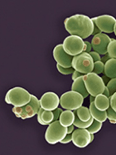
Annual Review of Food Science and Technology
Bridging Research and Application in Food ScienceThe Annual Review of Food Science and Technology, published by ANNUAL REVIEWS, is an esteemed journal dedicated to advancing the knowledge within the field of food science. With an impressive Q1 ranking in the Food Science category, and ranking as #6 out of 389 in the Scopus Agricultural and Biological Sciences category, the journal serves as a vital resource for researchers, professionals, and students. This publication encapsulates comprehensive reviews and cutting-edge research, helping to bridge the gap between research and practical application. Though it does not offer Open Access, it provides valuable insights into various aspects of food science from 2010 to 2024, ensuring that its readership stays at the forefront of emerging trends and innovations. The journal's focus on high-quality, peer-reviewed articles makes it a critical platform for scholars looking to deepen their understanding and contribute to this rapidly evolving field.
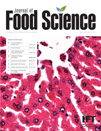
JOURNAL OF FOOD SCIENCE
Empowering Food Professionals with Cutting-Edge ResearchJOURNAL OF FOOD SCIENCE, published by Wiley, is a premier journal dedicated to advancing the field of food science, bridging the gap between fundamental research and practical application. With an impressive impact factor reflecting its authoritative status, the journal is ranked in the Q1 quartile for Food Science in 2023 and boasts a Scopus ranking of #71 out of 389, placing it in the 81st percentile within Agricultural and Biological Sciences. First launched in 1936, the journal continues to serve as an essential platform for researchers, professionals, and students to disseminate innovative studies and reviews that address critical issues in food quality, safety, and technology. While not currently offering open access, its rigorous peer-review process ensures the dissemination of high-quality and impactful research. Researchers engaged in the vital disciplines of food science will find this journal indispensable for keeping abreast of cutting-edge developments in the field.
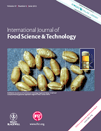
INTERNATIONAL JOURNAL OF FOOD SCIENCE AND TECHNOLOGY
Elevating Standards in Food Science ExcellenceINTERNATIONAL JOURNAL OF FOOD SCIENCE AND TECHNOLOGY, published by WILEY, serves as a premier platform for the dissemination of cutting-edge research in the field of food science and technology. With an ISSN of 0950-5423 and E-ISSN 1365-2621, this journal has been committed to publishing high-quality research since 1966 and is set to continue its impactful contributions through 2024. Recognized for its excellence, it holds a Q1 ranking in Food Science and a Q2 ranking in Industrial and Manufacturing Engineering as of 2023. The journal ranks #95/384 in Industrial and Manufacturing Engineering and #100/389 in Food Science on Scopus, placing it within the top quartiles of these fields. Although it does not currently offer Open Access, researchers and professionals benefit from access to a wealth of knowledge that advances understanding in both applied and theoretical aspects of food science. This journal is indispensable for anyone in the academic and professional domains who seeks to stay abreast of innovations and trends shaping the food industry.

FOOD TECHNOLOGY AND BIOTECHNOLOGY
Empowering Researchers to Shape the Future of FoodFOOD TECHNOLOGY AND BIOTECHNOLOGY is a distinguished peer-reviewed journal published by the Faculty of Food Technology and Biotechnology, University of Zagreb, Croatia. Since its inception in 1993, this Open Access journal has become a crucial platform for disseminating innovative research in the fields of food science, biotechnology, and chemical engineering. With a commendable impact factor and consistent Q2 and Q3 rankings across multiple categories—including Biotechnology, Food Science, and Industrial Engineering—this journal not only fosters academic discussions but also addresses real-world challenges in food production, safety, and sustainability. As it converges its thematic scope from 1996 to 2024, FOOD TECHNOLOGY AND BIOTECHNOLOGY remains committed to advancing knowledge through high-quality research and interdisciplinary collaboration, making it an essential resource for researchers, professionals, and students seeking to stay at the forefront of food innovation and biotechnology.